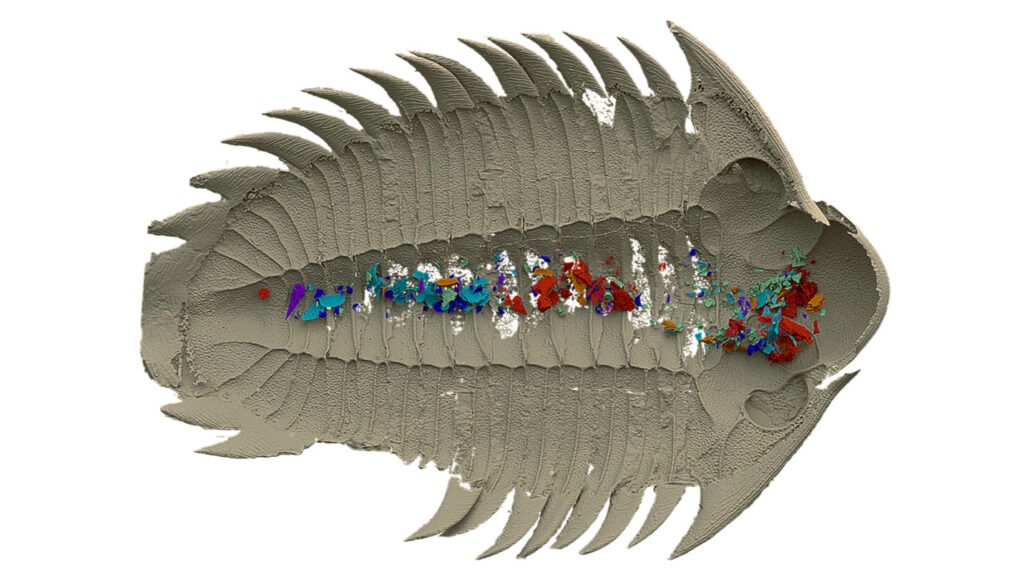Insights into the diet and feeding habits of unique trilobite fossil discovered

A mysterious, prehistoric marine creature has spilled its guts. For the first time, scientists have unearthed a fossilized trilobite whose final meals were preserved within its digestive system.
Paleontologist Valéria Vaškaninová and colleagues discovered the partially digested meals when they looked at a high-resolution 3-D scan of Bohemolichas incola, a previously known but relatively rare trilobite species that lived 465 million years ago. The contents include fragments of thin-walled shells, bits of echinoderms (a group that includes modern-day sea urchins and starfish), and other bottom-dwellers small enough to be swallowed whole, the researchers report online September 27 in Nature.
Many of the more than 20,000 described species of trilobites, a group that existed between 520 million and 252 million years ago, were prominent members of marine ecosystems. Some species may have even had dual digestive tracts, though B. incola did not (SN: 10/31/14). The new find not only provides direct evidence of what some trilobites may have eaten, but it also hints about their physiology and how they foraged.
Tightly packed clumps of shelly bits throughout the tubelike gut suggest that the trilobite fed almost continuously before it died, perhaps by scavenging the seafloor for broken remains of shelled creatures and digesting the soft tissues still attached to them. Trilobites typically didn’t have sturdy mouthparts and thus wouldn’t have had a powerful bite, says Vaškaninová, of Charles University in Prague.
And since the calcium-rich shells in the gut show no signs of being dissolved, the trilobite probably had a gut environment with an alkaline or neutral pH, Vaškaninová and colleagues suggest. That sort of biochemistry would have reduced the amount of dissolved calcium entering its bloodstream, which would be metabolically difficult to get rid of, the team proposes.
In a small bit of turnabout-is-fair-play, the scan also revealed that B. incola’s carcass had been scavenged by other organisms before fossilizing.
Our mission is to provide accurate, engaging news of science to the public. That mission has never been more important than it is today.
As a nonprofit news organization, we cannot do it without you.
Your support enables us to keep our content free and accessible to the next generation of scientists and engineers. Invest in quality science journalism by donating today.




